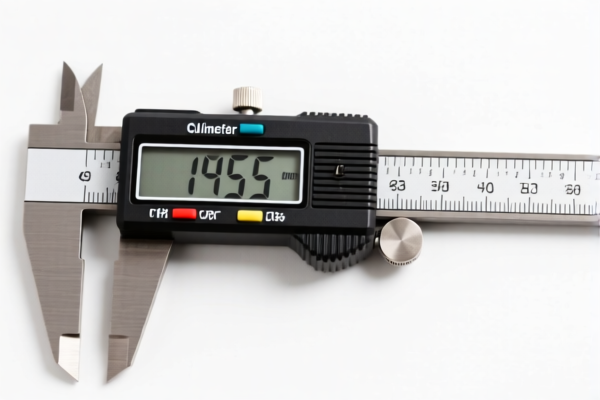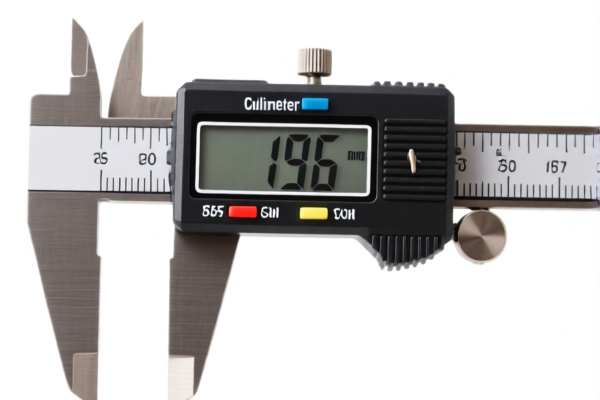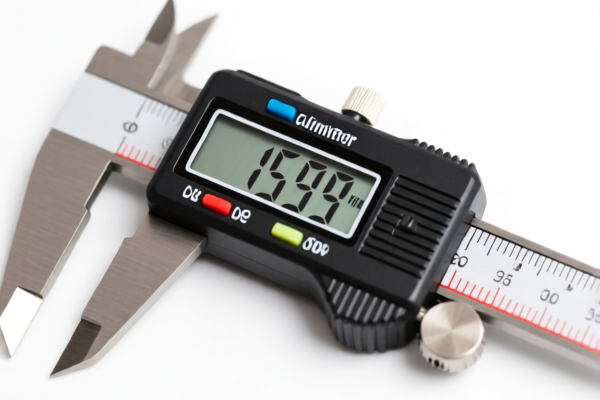| HS Code | Official Doc | Tariff Rate | Origin | Destination | Effective Date |
|---|---|---|---|---|---|
| 9027898090 | Doc | 55.0% | CN | US | 2025-05-12 |
| 9017900105 | Doc | The rate applicable to the article of which it is a part or acce+30.0% | CN | US | 2025-05-12 |
| 8479899599 | Doc | 82.5% | CN | US | 2025-05-12 |
| 8443993000 | Doc | 55.0% | CN | US | 2025-05-12 |
| 9030908923 | Doc | 55.0% | CN | US | 2025-05-12 |
| 9030840000 | Doc | 55.0% | CN | US | 2025-05-12 |
| 9030201000 | Doc | 55.0% | CN | US | 2025-05-12 |
| 9018310090 | Doc | 130.0% | CN | US | 2025-05-12 |
| 9032896060 | Doc | 56.7% | CN | US | 2025-05-12 |




Here is the structured analysis of the HS codes and applicable tariffs for the product "calibrator" (校准器), based on the provided data:
✅ HS CODE: 9027898090
Product Description: Calibration standards for physical or chemical analysis instruments and equipment
Total Tax Rate: 55.0%
- Base Tariff: 0.0%
- Additional Tariff: 25.0%
- Special Tariff after April 11, 2025: 30.0%
- Note: No anti-dumping duties on steel or aluminum apply here.
- Action Required: Confirm the specific type of calibration standard and ensure compliance with technical documentation requirements.
✅ HS CODE: 9017900105
Product Description: Calibration device for computing instruments
Total Tax Rate: 30.0% (based on the article it is part of)
- Base Tariff: The rate applicable to the article of which it is a part or accessory
- Additional Tariff: 0.0%
- Special Tariff after April 11, 2025: 30.0%
- Note: This classification depends on the main product it is associated with.
- Action Required: Verify the main computing instrument and its classification to determine the base tariff.
✅ HS CODE: 8479899599
Product Description: Calibration equipment for mechanical or electrical devices
Total Tax Rate: 82.5%
- Base Tariff: 2.5%
- Additional Tariff: 0.0%
- Special Tariff after April 11, 2025: 30.0%
- Steel/Aluminum Additional Tariff: 50.0% (if applicable)
- Note: High tax rate due to potential inclusion of steel or aluminum components.
- Action Required: Confirm the material composition and check for any applicable anti-dumping duties.
✅ HS CODE: 8443993000
Product Description: Calibration device for fax machines
Total Tax Rate: 55.0%
- Base Tariff: 0.0%
- Additional Tariff: 25.0%
- Special Tariff after April 11, 2025: 30.0%
- Note: No anti-dumping duties on steel or aluminum apply here.
- Action Required: Ensure the device is clearly identified as a fax machine calibration tool.
✅ HS CODE: 9030908923
Product Description: Calibration device for oscilloscopes
Total Tax Rate: 55.0%
- Base Tariff: 0.0%
- Additional Tariff: 25.0%
- Special Tariff after April 11, 2025: 30.0%
- Note: No anti-dumping duties on steel or aluminum apply here.
- Action Required: Confirm the oscilloscope model and ensure proper documentation.
✅ HS CODE: 9030840000
Product Description: Oscilloscope calibration device (9030 category)
Total Tax Rate: 55.0%
- Base Tariff: 0.0%
- Additional Tariff: 25.0%
- Special Tariff after April 11, 2025: 30.0%
- Note: No anti-dumping duties on steel or aluminum apply here.
- Action Required: Ensure the device is clearly categorized under 9030.
✅ HS CODE: 9030201000
Product Description: Oscilloscope calibration device (9030.20 category)
Total Tax Rate: 55.0%
- Base Tariff: 0.0%
- Additional Tariff: 25.0%
- Special Tariff after April 11, 2025: 30.0%
- Note: No anti-dumping duties on steel or aluminum apply here.
- Action Required: Confirm the specific subcategory (9030.20) and technical specifications.
✅ HS CODE: 9018310090
Product Description: Calibration device for syringes (medical device category)
Total Tax Rate: 130.0%
- Base Tariff: 0.0%
- Additional Tariff: 100.0%
- Special Tariff after April 11, 2025: 30.0%
- Note: Extremely high tax rate due to medical device classification.
- Action Required: Verify if the device is classified as a medical device and ensure all required certifications are in place.
✅ HS CODE: 9032896060
Product Description: Calibration device for flow controllers (process control instruments)
Total Tax Rate: 56.7%
- Base Tariff: 1.7%
- Additional Tariff: 25.0%
- Special Tariff after April 11, 2025: 30.0%
- Note: No anti-dumping duties on steel or aluminum apply here.
- Action Required: Confirm the type of flow controller and ensure proper documentation.
📌 Proactive Advice Summary:
- Verify the exact product type and classification (e.g., oscilloscope, syringe, fax machine, etc.) to ensure correct HS code.
- Check the material composition (especially if steel or aluminum is involved) to determine if additional tariffs apply.
- Confirm the base tariff based on the main product or category.
- Review the April 11, 2025, special tariff for all products.
- Ensure compliance with medical device regulations if applicable (e.g., HS code 9018310090).
- Maintain proper documentation and certifications for customs clearance.
Let me know if you need help with HS code selection or tariff calculation for a specific product. Here is the structured analysis of the HS codes and applicable tariffs for the product "calibrator" (校准器), based on the provided data:
✅ HS CODE: 9027898090
Product Description: Calibration standards for physical or chemical analysis instruments and equipment
Total Tax Rate: 55.0%
- Base Tariff: 0.0%
- Additional Tariff: 25.0%
- Special Tariff after April 11, 2025: 30.0%
- Note: No anti-dumping duties on steel or aluminum apply here.
- Action Required: Confirm the specific type of calibration standard and ensure compliance with technical documentation requirements.
✅ HS CODE: 9017900105
Product Description: Calibration device for computing instruments
Total Tax Rate: 30.0% (based on the article it is part of)
- Base Tariff: The rate applicable to the article of which it is a part or accessory
- Additional Tariff: 0.0%
- Special Tariff after April 11, 2025: 30.0%
- Note: This classification depends on the main product it is associated with.
- Action Required: Verify the main computing instrument and its classification to determine the base tariff.
✅ HS CODE: 8479899599
Product Description: Calibration equipment for mechanical or electrical devices
Total Tax Rate: 82.5%
- Base Tariff: 2.5%
- Additional Tariff: 0.0%
- Special Tariff after April 11, 2025: 30.0%
- Steel/Aluminum Additional Tariff: 50.0% (if applicable)
- Note: High tax rate due to potential inclusion of steel or aluminum components.
- Action Required: Confirm the material composition and check for any applicable anti-dumping duties.
✅ HS CODE: 8443993000
Product Description: Calibration device for fax machines
Total Tax Rate: 55.0%
- Base Tariff: 0.0%
- Additional Tariff: 25.0%
- Special Tariff after April 11, 2025: 30.0%
- Note: No anti-dumping duties on steel or aluminum apply here.
- Action Required: Ensure the device is clearly identified as a fax machine calibration tool.
✅ HS CODE: 9030908923
Product Description: Calibration device for oscilloscopes
Total Tax Rate: 55.0%
- Base Tariff: 0.0%
- Additional Tariff: 25.0%
- Special Tariff after April 11, 2025: 30.0%
- Note: No anti-dumping duties on steel or aluminum apply here.
- Action Required: Confirm the oscilloscope model and ensure proper documentation.
✅ HS CODE: 9030840000
Product Description: Oscilloscope calibration device (9030 category)
Total Tax Rate: 55.0%
- Base Tariff: 0.0%
- Additional Tariff: 25.0%
- Special Tariff after April 11, 2025: 30.0%
- Note: No anti-dumping duties on steel or aluminum apply here.
- Action Required: Ensure the device is clearly categorized under 9030.
✅ HS CODE: 9030201000
Product Description: Oscilloscope calibration device (9030.20 category)
Total Tax Rate: 55.0%
- Base Tariff: 0.0%
- Additional Tariff: 25.0%
- Special Tariff after April 11, 2025: 30.0%
- Note: No anti-dumping duties on steel or aluminum apply here.
- Action Required: Confirm the specific subcategory (9030.20) and technical specifications.
✅ HS CODE: 9018310090
Product Description: Calibration device for syringes (medical device category)
Total Tax Rate: 130.0%
- Base Tariff: 0.0%
- Additional Tariff: 100.0%
- Special Tariff after April 11, 2025: 30.0%
- Note: Extremely high tax rate due to medical device classification.
- Action Required: Verify if the device is classified as a medical device and ensure all required certifications are in place.
✅ HS CODE: 9032896060
Product Description: Calibration device for flow controllers (process control instruments)
Total Tax Rate: 56.7%
- Base Tariff: 1.7%
- Additional Tariff: 25.0%
- Special Tariff after April 11, 2025: 30.0%
- Note: No anti-dumping duties on steel or aluminum apply here.
- Action Required: Confirm the type of flow controller and ensure proper documentation.
📌 Proactive Advice Summary:
- Verify the exact product type and classification (e.g., oscilloscope, syringe, fax machine, etc.) to ensure correct HS code.
- Check the material composition (especially if steel or aluminum is involved) to determine if additional tariffs apply.
- Confirm the base tariff based on the main product or category.
- Review the April 11, 2025, special tariff for all products.
- Ensure compliance with medical device regulations if applicable (e.g., HS code 9018310090).
- Maintain proper documentation and certifications for customs clearance.
Let me know if you need help with HS code selection or tariff calculation for a specific product.
Customer Reviews
No reviews yet.